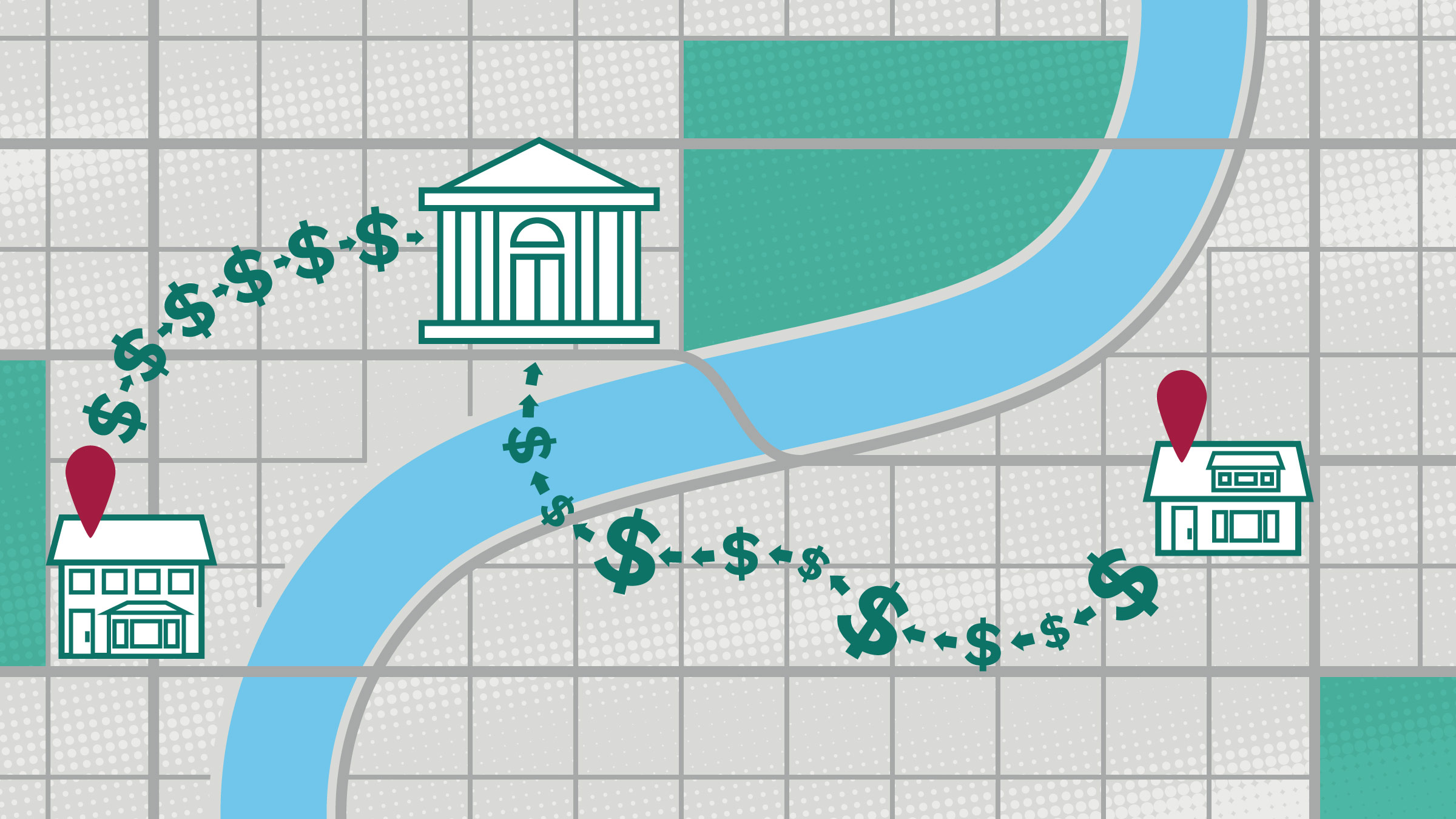|
Hispanics, the nation's fastest-growing minority group, are embracing entrepreneurship at an impressive rate. According to the U.S. Census Bureau's 2007 Survey of Business Owners,1/ the number of Hispanic-owned small businesses2/ in the United States rose from 1.6 million to 2.3 million between 2002 and 2007, an increase of 43.7 percent. The rate of increase was more than double the 18 percent increase in the total number of small businesses nationwide, and it outpaced the growth rate of the Hispanic population during roughly the same time period. From 2000 to 2009, the nation's Hispanic population grew from 35.6 million to 48.4 million, an increase of 36 percent.
Among the six states in the Ninth Federal Reserve District, Hispanic entrepreneurship has increased substantially, but not necessarily at a faster pace than Hispanic population growth. For example, between 2000 and 2009, the Hispanic population grew by 87.5 percent in North Dakota and 113.2 percent in South Dakota. Between 2002 and 2007, the number of Hispanic-owned businesses in the two states grew by 24 percent and 68 percent, respectively.
Nationwide, Hispanic-owned businesses generated $345.2 billion in receipts in 2007. The figure is a 55.5 percent increase over the 2002 total of $221.9 billion and is substantially higher than the nationwide increase of 33.5 percent for all businesses. Among the six states in the Ninth Federal Reserve District, Minnesota had the highest percentage increase in revenues for Hispanic businesses, at 248 percent for the period 2002–2007.
Lagging behind
The growth in Hispanic-owned businesses is encouraging news, since small businesses can be engines of economic development. Small businesses employ about one-half of all Americans and account for about 60 percent of gross job creation.3/ Ethnic and minority-owned small businesses may provide additional benefits by developing leaders capable of bringing about positive changes in their communities.
However, despite recent progress, Hispanic-owned firms lag behind in some respects. For example, Hispanic-owned businesses are overrepresented in low-growth and no-growth economic sectors,4/ and their average gross receipt per firm is comparatively low. In 2007, the average was $152,715, whereas the national average was $1,113,281. In fact, the share of Hispanic-owned businesses with receipts of $1 million or more was only 1.9 percent in 2007, compared to 4.9 percent for non-Hispanic-owned firms. The low average for gross receipts may be partly due to the average size of Hispanic-owned businesses. Many of them are microenterprises, or establishments with zero to just a few paid employees. But there are other factors besides size that keep Hispanic-owned businesses from reaching their potential. According to a sample of nonprofit organizations in the Ninth District that serve as intermediaries with Hispanic-owned small businesses, barriers Hispanic entrepreneurs face include:
- Having limited collateral value.
- Having a poor or limited credit history.
- Having low literacy and English proficiency.
- Having a fear of government and established institutions.
- Encountering limited acceptance of the Individual Taxpayer Identification Number (ITIN). The ITIN is a tax-processing number issued by the Internal Revenue Service to help individuals who do not have, and are not eligible to obtain, a Social Security Number comply with U.S. tax laws. While some banks offer products and services to people who have ITINs, others do not.
- Having limited opportunities to network with sources of traditional business financing and providers of business-related technical assistance.
- Having a limited understanding of American business processes.
- Encountering a lack of culturally friendly or linguistically appropriate services at local institutions.
- Dealing with long distances between businesses and service providers. In some areas of the Ninth District, small business lenders and service providers—especially those who cater to Spanish speakers—are located in big cities and are therefore not conveniently located for entrepreneurs residing in rural areas.
The nonprofit intermediaries consider the problem of obtaining financing to be a major one for Hispanic entrepreneurs—particularly in rural areas, where Hispanics have not succeeded in accessing many pools of loan funds. The intermediaries noted that Hispanic entrepreneurs tend to seek capital first from family members and then from friends. They approach banks and other financial institutions as a last resort. The use of credit from family and friends may be very expensive, depending on the repayment terms, and at times can even affect the business's ability to grow, as most entrepreneurs miss opportunities by not tapping bank financing soon enough.
The nonprofit intermediaries also noted that, due to positioning their businesses in low-growth sectors and wanting to keep sole ownership or full control of the business, Hispanic entrepreneurs have not used mergers, acquisitions, and strategic alliances to reposition their businesses for greater opportunities. Furthermore, Hispanic entrepreneurs are not fully employing technology to enhance their capabilities.
Ninth District efforts
Fortunately, there are programs in place that can help Hispanic entrepreneurs address the barriers they face. For example, some local municipalities and nonprofit intermediaries in the Ninth District are providing managerial assistance and low-cost financing to support Hispanic entrepreneurship development efforts. Also, the U.S. Small Business Administration (SBA) has expanded its program offerings in a way that may benefit Hispanic entrepreneurs. To supplement its popular, longstanding 7(a) loan program, which is open to any small business, the SBA has added two programs, known as the 8(a) Program and the Microloan Program, that are designed to help businesses owned and controlled by economically and socially disadvantaged individuals access financing and enter the economic mainstream. The 8(a) Program provides business development assistance to help entrepreneurs compete in the marketplace, and the Microloan Program makes funds available so nonprofit, community-based intermediaries can offer small businesses short-term loans of up to $50,000. Intermediaries that participate in the Microloan Program are required to provide business training and technical assistance to their microloan borrowers.
In February of this year, the SBA launched two additional new lending initiatives, the Small Loan Advantage Program and the Community Advantage Program, that will allow lenders to process more credit requests from the most underserved entrepreneurs in our economy, including Hispanics. The Small Loan Advantage Program encourages banks that are preferred SBA lenders to make small loans (a maximum of $250,000) to entrepreneurs. The Community Advantage Program enables "mission-focused" financial institutions, including community development financial institutions (CDFIs),5/ Certified Development Companies,6/ and nonprofit microlending intermediaries, to provide loans through the existing 7(a) program.
Various organizations in the Ninth District, such as CDFIs and Hispanic chambers of commerce, have developed programs to support Hispanic entrepreneurship. For example, the Latino Economic Development Center (LEDC), a nonprofit CDFI in Minnesota that initially focused on organizing the immigrant communities in Minneapolis-St. Paul, has organized rural economic development initiatives to help Hispanics in rural towns and small cities in greater Minnesota organize and access economic opportunities in their local areas. According to LEDC Executive Director Ramon Leon, the rural initiatives were developed in response to survey results from Hispanics in those communities.
"We asked them what the most important missing resources were for starting or expanding a business, as well as what other critical social and economic issues prevent them from integrating with the local economic system. Results from the survey and information gathered during outreach led us to organize economic development efforts in greater Minnesota," says Leon.
For the past several years, another intermediary, the Southwest Initiative Foundation (SWIF), a rural Minnesota community foundation that serves the southwestern region of the state, has developed and implemented a program that supports the growing number of Hispanics who live in the area and want to start or grow small businesses. Under the Diverse Business Program, two business-minded members of the Hispanic community were coached and trained to become business consultants and assist Hispanic entrepreneurs in the region, particularly in the cities of Worthington and Willmar. Hispanic entrepreneurs who are approved for a microloan from SWIF are required to work with the consultants for technical assistance and training in record keeping, accounting, marketing, and business management. In the same vein, SWIF's staff translated the organization's most important business planning documents into Spanish. In addition, SWIF developed Latino business groups within the local chambers of commerce, first in Worthington and then in Willmar. The results are promising. Of 201 microloans closed since the program was launched in October 2001, 28 went to Hispanic entrepreneurs. In comparison, in the 15 years dating from SWIF's founding in 1986 to the program's launch in 2001, only three SWIF loans went to Hispanics.
Additional steps to success
As the programs described above illustrate, noteworthy steps have been taken to assist with the growth of Hispanic-owned businesses in the Ninth District. Additional steps suggested by the nonprofit intermediaries we contacted include:
- Recognizing the work of nonprofit microlenders and other organizations that provide loan capital, technical assistance, and managerial support to entrepreneurs, as this work gives bankers more confidence in lending to Hispanic-owned small businesses.
- Facilitating access to alternative lenders like CDFIs. Alternative financing is even more important now, since the recession and the moderateness of the subsequent recovery have made bank lending more challenging.
- Promoting better working relationships between banks and all minority and immigrant groups. While the incentives that the Community Reinvestment Act7/ gives banks to reinvest in their communities are important, it is also in the self-interest of banks to work with emerging market communities.
If carried out effectively in the long run, the projects and additional steps discussed here may help Hispanic communities enjoy both stronger economies and a new class of leadership—one capable of effecting changes that can help all underserved groups prosper.
For more informationLatino Economic Development Center |
1/ The Survey of Business Owners (SBO), which is conducted every five years as part of the Economic Census, involves a sample of more than 2 million nonfarm businesses that have receipts of $1,000 or more and are organized as individual proprietorships, partnerships, or any type of corporation. While the Great Recession likely caused a decrease in the number of Hispanic-owned small businesses, the extent of the decrease will not be known until results of the 2012 SBO are released.
2/ According to the U.S. Small Business Administration (SBA), the size standards for what constitutes a small business vary by industry and are measured in number of employees or annual receipts. For example, for most manufacturing industries, the SBA defines a small business as having 500 or fewer employees. For the agricultural industry, the SBA defines a small business as having $750,000 or less in annual receipts. To view a table of all SBA size standards, visit www.sba.gov/sites/default/files/Size_Standards_Table.pdf.
3/ Federal Reserve Chairman Ben Bernanke, from the speech Addressing the Financing Needs of Small Businesses, delivered July 12, 2010, in Washington, D.C.
4/ Examples of low-growth and no-growth sectors, based on categories designated by the federal government's North American Industry Classification System, are Repair and Maintenance, Personal and Laundry Services, and Health Care and Social Assistance.
5/ CDFIs are specialized entities that provide loans, investments, training, or other services in underserved or economically distressed areas.
6/ Certified Development Companies are nonprofit organizations that the SBA has approved to provide small business financing through its 504 Loan Program.
7/ The Community Reinvestment Act (CRA), enacted in 1977, requires banks to provide loans, investments, and services in all parts of the geographic areas they serve, including low- and moderate-income neighborhoods. For more on the CRA, visit www.ffiec.gov/cra/default.htm.
Michou Kokodoko is a senior policy analyst in the Minneapolis Fed’s Community Development and Engagement department. He leads the Bank’s efforts to promote effective community-bank partnerships by increasing awareness of community development trends and investment opportunities, especially those related to the Community Reinvestment Act.






